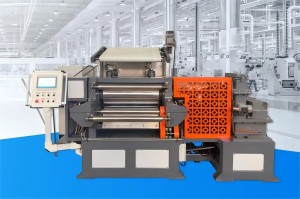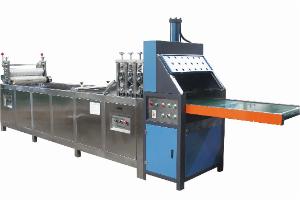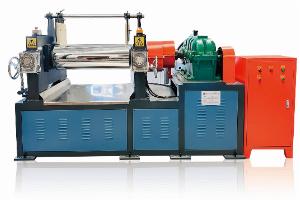
Why Automatic Rubber Cutting Machines Are Essential in Modern Manufacturing
2025-09-16
Rubber plays a critical role in industries ranging from automotive to construction. From tires and seals to industrial belts and gaskets, the demand for precisely cut rubber products is continuously increasing. This is where the Automatic Rubber Cutting Machine steps in, providing an efficient, accurate, and cost-effective solution for manufacturers.
In today’s competitive environment, relying on manual cutting methods is no longer enough. Companies that want to stay ahead are investing in automation—and rubber cutting machines are right at the center of this shift.
What Makes an Automatic Rubber Cutting Machine Different?
Unlike traditional manual cutting, an Automatic Rubber Cutting Machine uses advanced systems to ensure uniform size, precise shapes, and consistent output. The process eliminates human error and speeds up production dramatically.
-
High Precision: Every piece of rubber is cut to exact specifications.
-
Time Saving: The machine can cut continuously, reducing downtime.
-
Material Utilization: Advanced programming minimizes waste.
-
Ease of Operation: Simple controls make it user-friendly, even for new operators.
Honestly, once you switch to automatic cutting, going back to manual feels like trying to use a flip phone after a smartphone.
Benefits Across Industries
The versatility of Automatic Rubber Cutting Machines means they serve a wide range of industries:
-
Automotive: For tires, seals, vibration absorbers, and hoses.
-
Construction: For waterproofing sheets, seals, and protective layers.
-
Industrial Manufacturing: For belts, gaskets, and machine parts.
-
Consumer Goods: For footwear, sporting goods, and daily-use products.
With automation, each industry not only boosts efficiency but also improves product consistency—something that customers notice and appreciate.
Why Automation Is the Future of Rubber Processing
Think about it—time is money, and in manufacturing, every second matters. The Automatic Rubber Cutting Machine doesn’t just cut material; it cuts costs, boosts efficiency, and ensures products meet the highest quality standards.
Transitioning to automation also reduces reliance on manual labor, which means fewer risks of workplace injuries and errors. Over time, this leads to stronger profitability and a sustainable production model.
Choosing the Right Rubber Cutting Machine
Not all machines are created equal. When selecting an Automatic Rubber Cutting Machine, you should consider:
-
Cutting Capacity – Does it match your production needs?
-
Precision Level – Can it handle complex shapes with accuracy?
-
Durability – Is it designed for continuous heavy-duty use?
-
After-Sales Support – Reliable suppliers provide training, maintenance, and spare parts.
And let’s be real, working with a trusted supplier makes all the difference between a smooth operation and constant headaches.
Conclusion: A Smarter Way to Manufacture
The Automatic Rubber Cutting Machine is more than just a tool—it’s a strategic investment for companies that aim to stay competitive in a rapidly evolving market. By delivering accuracy, efficiency, and scalability, it empowers manufacturers to meet growing demands with confidence.
If you’re still relying on manual methods, maybe it’s time to ask: why work harder when you can work smarter?


